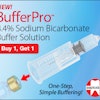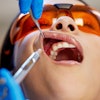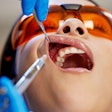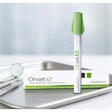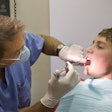
Following a third-molar extraction, pain alleviation is foremost in most patients' minds. Is there one analgesic that works better than the rest?
Two, actually, according to researchers from the University of Oxford: a combination of 200 mg of ibuprofen with 500 mg of paracetamol (acetaminophen) (British Dental Journal, November 12, 2011, Vol. 211:9, pp. 419-420). Etoriocoxib (120 mg) -- a nonsteroidal anti-inflammatory (NSAID), brand name Arcoxia -- also fared well in the study, the authors noted.
They analyzed results from 35 separate Cochrane reviews that included 38 different drugs or drug combinations tested in standard acute postoperative pain trials. The data covered some 45,000 participants in about 350 individual studies. Of these, 29,000 contributed dental pain data, with the vast majority pertaining to third-molar extractions.
The study authors wanted to update a 2004 effort that used randomized, double-blind studies to evaluate the efficacy of oral analgesics after third-molar extractions (British Dental Journal, October 9, 2004, Vol. 197:7, pp. 407-411). In that study, the authors determined that NSAIDs and cyclooxygenase-2 (COX-2) inhibitors had the lowest needed to treat (NNT) number. In addition, these analgesics may have fewer negative side effects than other pain treatments after third-molar surgery, the authors noted.
High test of efficacy
In the current study, the combination of 200 mg of ibuprofen and 500 mg of paracetamol had a 1.6 NNT rating, the best of the group by a small margin over 120 mg of etoriocoxib.
Both of those analgesics also performed well in another category: the percentage of patients who started out with moderate or severe pain who had at least 50% maximum pain relief in a four- to six-hour period after taking medication.
"This is a high test of efficacy," the researchers noted, "achieved by only about 10% of patients who received no active treatment (placebo), but achieved by 34% to 74% of those who did get the active drug."
The ibuprofen-paracetamol combination performed the best in this category, with 74% achieving maximum pain relief while 71% did so with etoriocoxib. Ibuprofen 400 mg soluble, diclofenac 50 mg K (brand name: Cambia), and naproxen 500/550 mg (such as Aleve) also performed well. Paracetamol 1,000 mg achieved only a 41% response rate, according to the study authors.
They also considered remedication times, noting that greater efficacy and longer duration of action tended to go together. The top performers in other categories -- etoriocoxib and the ibuprofen-paracetamol combination -- also fared well in this metric. The former has a median time to remedication of greater than 24 hours, while the latter is greater than eight hours.
An interesting note is that the researchers found a gap in data for dihydrocodeine 30 mg (also known as DHC and paracodeine). "The evidence is largely silent," they wrote. While only 136 patients were found in trials pertaining to dental pain, only 24% reported at least 50% maximum pain relief while 7% taking a placebo did. An NNT score of 6 resulted, much worse than any of the drugs examined by the researchers. The score was also far worse than ibuprofen 400 mg in the only direct comparison, according to the researchers
The researchers' findings are intended to help clinicians and patients make informed choices about analgesia based on pain relief, duration of action, and potential adverse events.
"This article highlights the fact that no single drug is effective in all patients -- even the best drugs fail to provide good levels of pain relief in at least 30%," the study authors concluded.
The solution?
"Try a different analgesic," they wrote.

